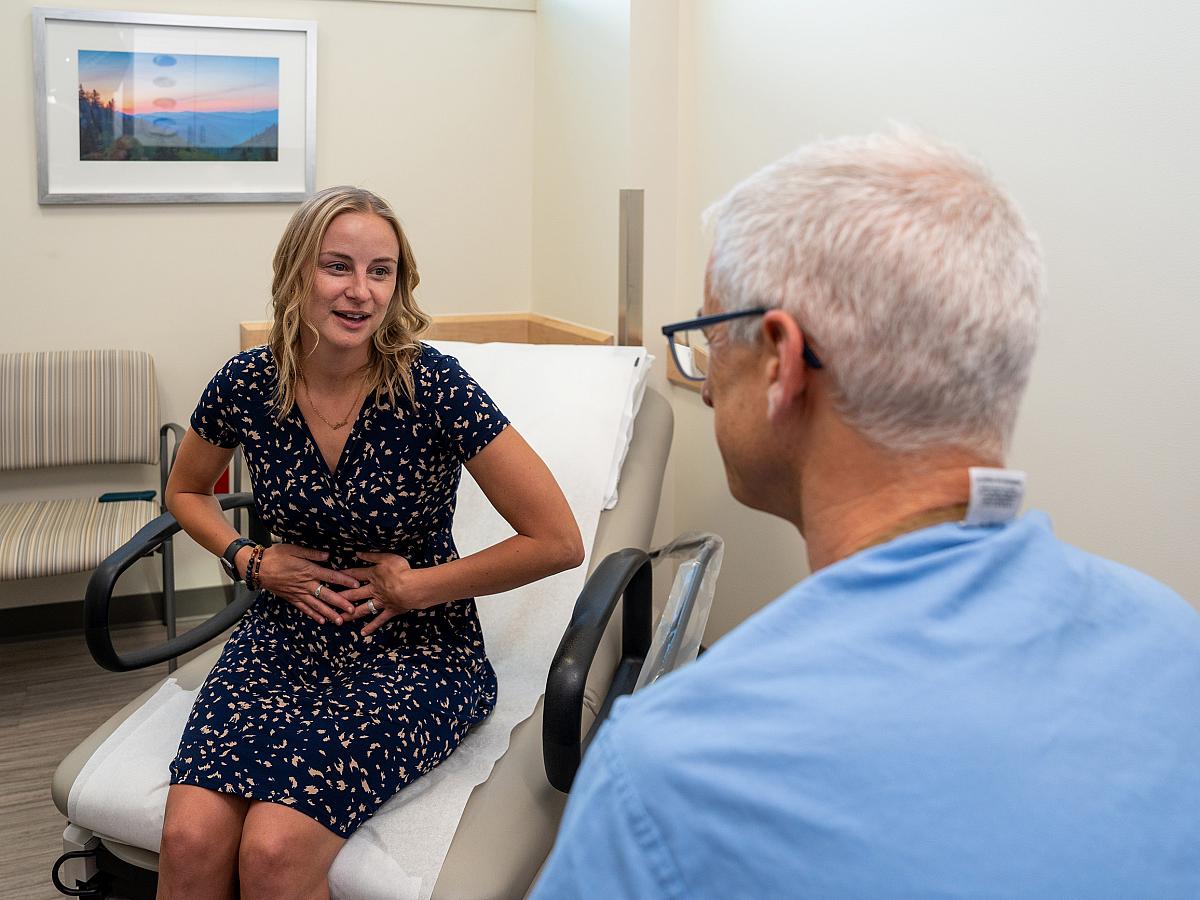

What Is Tubal Ligation?
Tubal ligation is a surgical procedure that blocks or removes your fallopian tubes, which carry eggs from the ovaries to the uterus. It's a sterilization (making someone unable to have kids) technique commonly referred to as getting your “tubes tied,” even though there’s no tying involved. This procedure prevents pregnancy by keeping the sperm from reaching an egg.
Why Choose University of Utah Health?
Our Women’s Health Services offer the highest quality services in reproductive care. Our multidisciplinary specialists from women’s health, reproductive endocrinology, and minimally invasive gynecologic surgery help patients with a wide range of contraceptive and reproductive issues. Our doctors use the most advanced technologies and techniques, including minimally invasive tubal ligation.
Things to Consider Before Getting a Tubal Ligation
Make sure you no longer want to become pregnant. Some patients may regret getting sterilized in the future. Even though tubal ligations can be reversed, it is considered permanent sterilization. Our health care team will provide counseling about the pros, cons, and effective alternatives to ensure that you’re making the best decision for you.
Health Considerations
Tubal ligation may put you at higher risk for complications if:
- you have insulin-dependent diabetes, you
- are morbidly obese, or
- you have had previous abdominal surgeries.
Effective Birth Control Alternatives
We may ask if your partner has considered a vasectomy—a procedure to block sperm from the semen. Vasectomies are also permanent but more effective, less expensive, and carry fewer risks than tubal ligation.
Other effective, but not permanent, birth control methods include:
- birth control pills,
- IUD (intrauterine device),
- hormonal shots,
- patches,
- implants,
- vaginal rings, and
- more.
Pros & Cons of Tubal Ligation
The advantages of tubal ligation include:
- permanence,
- 99 percent effectiveness,
- no effect on hormone production, and
- a possible decrease in cancer risk.
Possible downsides to discuss with your doctor include:
- a high risk of regret,
- greater invasiveness than other methods,
- possible injury to other organs, or
- increased ectopic pregnancy (in the fallopian tube) risk if you do become pregnant.
Tubal Ligation Risks
Our health care team will counsel you in detail about the risks of tubal ligation. Complications are rare, but may include:
- bleeding;
- infection;
- uterine perforation;
- regret; or
- injury to your intestines, blood vessels, or urinary tract.
Find a Gynecologic Surgeon
Katherine G. Hayes, MD, FACOG
Gynecological Surgery2 Resulting Health Care Providers
What to Expect at Tubal Ligation Surgery
How to Prepare
Use the time before your surgery to address any concerns or ask your doctor questions. They will also provide you with surgical prep instructions that may include:
- avoiding aspirin and other blood thinners before surgery,
- when to stop eating and drinking before surgery,
- arranging for someone to drive you home after surgery, or
- recommending time off from work to heal.
Day of Surgery
Tubal ligation surgery takes about 30 minutes to complete. Your surgeon will use a laparoscope (a small tool with a camera attached) to perform the procedure because a laparoscope is less invasive than open surgery and minimizes scarring. Your surgeon will make two small incisions (cuts) — each at least 5 millimeters long.
Your surgeon will block both of your fallopian tubes by:
- placing a clip on each tube,
- burning each one to cut and seal it, or
- removing the tubes.
Fallopian tube removal is the most effective option and will also significantly reduce your risk of ovarian cancer.
Tubal Ligation Effectiveness
Tubal ligation is highly effective. Only about 1 in 200 patients who opted to get their fallopian tubes blocked got pregnant. The failure rate is even lower if the fallopian tubes are removed.
Tubal Ligation Recovery
Immediately following tubal ligation surgery, you can expect to:
- go home within a few hours.
- experience some vaginal bleeding that may last for a few days.
- return to work within a week.
Signs of Infection after Tubal Ligation
Watch for signs of infection, including:
- fever,
- severe pain,
- burning during urination, and
- redness or pus at the incision site.
Tubal Ligation Scar
Tubal ligation scars are small and easy to hide. You will typically have one in your belly button and the other in your lower abdomen.
Pregnancy after Tubal Ligation
Patients who want to become pregnant after tubal ligation may choose a procedure to reverse tubal ligation. However, it cannot be done if the fallopian tubes were removed. Even if you kept your fallopian tubes, the success of tubal ligation reversal will depend on how damaged they are.
However, you can still become pregnant through in vitro fertilization (IVF). The sperm will fertilize your egg outside of your body, then will be manually transferred to your uterus. This procedure bypasses the need for fallopian tubes.
Tubal Ligation during C-Section
Many patients who don’t want any more children typically opt for a tubal ligation during their cesarean sections because it’s easy and doesn’t require additional surgery. For others, the procedure’s benefits should be weighed against less invasive alternatives.
Schedule a Consultation
If you are considering tubal ligation or other forms of contraception, call 801-213-2995 to request a consultation with one or our gynecological surgeons. No referral is necessary.





